2023 Toyota BZ4X First Drive Review: The RAV4 of EVs is Here

FAST FACTS
| Motor: | 2x) |
| Battery Capacity: | 72.8 kWh) |
| Output: | 214 hp, 248 lb-ft) |
| Transmission: | 1AT, FWD/AWD |
| US fuel economy (MPGe): | 131/107/119 (XLE FWD), 112/92/102 (Limited AWD) |
| CAN fuel economy (Le/100KM): | 1.8/2.2/2.0 (FWD), 2.1/2.5/2.3 (AWD) |
| Range: | 242–252 mi (FWD), 222–228 mi (AWD) / 406 km (FWD), 367 km (AWD) |
| Starting Price (USD): | $43,215 (inc. dest.) |
| As-Tested Price (USD): | $49,995 (est, inc. dest.) |
| Starting Price (CAD): | $46,880 (inc. dest.) |
| As-Tested Price (CAD): | $64,640 (XLE Tech, inc. dest.) |
You’d be forgiven for thinking the 2023 Toyota bZ4X should have debuted years ago.
After all, Toyota popularized electrified mobility 20 years ago when the second-generation Prius showed up. In the years since, the RAV4 has ascended to sales supremacy, and its own hybrid model still has months-long wait times. So ditching the dino juice seemed like a natural evolution.
The result is this, the 2023 Toyota bZ4X. Arriving late to the scene, Toyota’s mass-production EV is quite good, with a focus on ease of use and high quality typical of the brand. It really is the RAV4 of the compact crossover EV crowd, for better and for worse.
Get a Quote on a New 2023 Toyota bZ4XWhat’s new?
Like the GR86 and BRZ sports cars, the bZ4X is a collaboration between Toyota and Subaru; the latter’s version is called Solterra. Both ride on the e-TNGA platform, a dedicated platform for battery electric vehicles. They are functionally identical, with the only exterior differences being the headlights, taillights, and front bumper.
It’s hard to get a feel for the size of the thing in photos, but the bZ4X is lower and ever so slightly wider than a current RAV4. It’s got about 3.5 inches (90 millimeters) of length over its best-selling sibling too, measuring 184.6 inches (4,690 mm) from its low nose to full-width taillight. The other EV advantage is an enormous 112.2-inch (2,850-mm) wheelbase, giving the bZ4X over half a foot more between the axles. As we’ll find out soon, that pays dividends in interior space, especially in the rear.
The proportions may be different, but the bZ4X still carries enough Toyota DNA to fit into the family. A vestigial grille and two stern headlights have Venza and Corolla vibes. The body-colored “eyebrows” do make for some very un-Toyota shut lines up front, however. (It’s important to note our testers are pre-production models.) The pair of character lines along the flanks look like waves on a lake, and to these eyes, the bZ4X pulls it off. The outsized cladding, not so much. It just looks inelegant, especially around the charge port. Lower trims sit on 18-inch wheels, while the top model roll on 20s.
Depending on the number of driven wheels, the bZ4X comes with either a 71.4-kWh (front-drive) or 72.8-kWh (all-wheel-drive) battery pack. The official EPA range figures are 252 miles for the former, and 228 miles for the latter. That’s for the XLE trim, as well; opt for the Limited in the US and the bZ4X loses 10 and 6 miles, respectively. Curiously, the Canadian NRCan numbers only distinguish between driven wheels, not trims: expect 406 kilometers for FWD, and 367 km for AWD.
2023 Toyota bZ4X interior and comfort
As I slot into the driver’s seat, the bZ4X impresses with a deft blend of new and traditional design touches. Toyota has resisted the lure of the open-space pass-through a la the Hyundai Ioniq 5, instead opting for a bridge-type console similar to the Sienna’s. The big central infotainment screen waterfalls into the center console, and there’s enough space below it for a medium-sized handbag. No over-complicated electronic door handles. No touch-activated slider controls. It takes just a matter of seconds to find all the necessary controls to head off.
Where Toyota has moved forward is with material choices. The bZ4X interior is monochrome, yet uses texture and patterns to introduce warmth. I don’t know how long the waffle-knit dashboard texture will stay clean when the bZ4X is pressed into family duty, but I’m happy it exists. I’m less stoked about the big swath of piano black in the center console. This includes the wireless charge pad cell, which is, in itself, a confusing design. It includes a cover, so as not to distract drivers doing their thing … except there’s a pattern on this one too, so keen-eyed drivers will still see the telltale signs of notifications.
SEE ALSO: Kia EV6 vs Hyundai Ioniq 5 Comparison: Sibling Rivalry(Our phone regularly stopped taking a charge from the Qi pad, but we’re chalking that up to the car’s pre-prod status.)
Front-row inhabitants enjoy 38.6 inches (980 mm) of headroom and a huge 42.1 inches (1,069 mm) of legroom. The second row’s flat floor and the panoramic sunroof make it seem roomy. However, the car’s aggressively raked rear window does eat into the measurements, posting 37.1 inches (942 mm) and 35.3 (897 mm), respectively. Nonetheless, adults should be able to fit just fine, and there’s 27.7 cubic feet (784 liters) of storage in the back.
2023 Toyota bZ4X technology and features
Two pieces of tech stand out in the bZ4X, more so than anything else in its hand. The first a deceptively easy one, the sort of thing you experience and wonder why it hasn’t taken off earlier. We’re talking about the far-away instrument panel, which sits far closer to the windshield base than is usual. It splits the difference between a traditional setup and a HUD, reducing eye movement time by 40 percent. Not only that, but its viewing angle clearly above the steering wheel rim means drivers can adjust the tilt/telescoping tiller for personal comfort, not for legibility. The 7.0-inch screen is also customizable.
The other advantage is the Toyota Multimedia system. Goodbye Entune, and hello to one of the best user interfaces in the mainstream sphere. Here in 12.3-inch form (8.0 inches is standard), the screen responds quickly to taps and pokes, and it looks great doing so. There’s a simplicity to the main menus that keeps the system approachable to newcomers, while wireless Apple CarPlay and Android Auto allows them to easily access the most common user interface in their lives. Toyota has kept physical buttons for primary controls, though volume is a pair of them instead of a dial. The native system also allows for a simple “Hey Toyota,” before requesting things like a specific restaurant, including refining a search based on rating. Asking the digital assistant for store hours works, too.
There are up to five USB ports within the bZ4X (four USB-C, one USB-A). Top trims include a nine-speaker JBL sound system, though it does eat into trunk space somewhat.
Unusually, charging rates differ depending on the amount of driven wheels. The FWD bZ4X is capable of speeds up to 150 kWh, yet the AWD model peaks at 100 kWh. Toyota says to expect the usual 20–to–80-percent charge time to take “around an hour” on DC fast-charging. That’s slower than most of the competition. If you charge at home, a 240-volt outlet should get the job done in 11 hours.
Toyota Safety Sense 3.0 is standard on all bZ4X models. The updated suite of assists includes a more comprehensive automated braking system, with pedestrian, cyclist, and motorcyclist detection. There’s also adaptive cruise control, auto high beams, and lane-centering. Blind-spot monitoring comes standard in the US (it arrives on the LE trim in Canada), bundled with rear cross-traffic alert and a new safe exit assist. Top trims include a 360-degree camera, which handily shows the road under the car by utilizing previous footage from the camera.
Toyota’s Safety Connect, Service Connect, and Remote Connect are all available, either optional or with included trial subscriptions, depending on trim. The latter also includes a new digital key, allowing owners to share their key with friends and family, on either Android or Apple devices.
2023 Toyota bZ4X driving impressions
We split our time evenly between FWD and AWD bZ4Xs. The day started in the single-motor car, which puts down an entirely sensible 201 horsepower and 196 pound-feet of torque. It more than kept up with Victoria traffic, quietly whirring up to highway speed without issue. Toyota quotes a 7.5-second run to 62 mph (100 km/h) for the front-driver, and if anything, that feels slightly conservative. Swapping into the AWD model adds more torque than horsepower: official numbers are 248 lb-ft and 214 hp. It does feel slightly quicker in a straight line, but in normal operation there’s little between the two.
Like other EVs, the bZ4X feels lighter than its curb weight suggests, since the heavy components are all much lower in the chassis than an ICE car. The low center of gravity also keeps the bZ4X feeling secure and locked-in on the road. The electrically-assisted power steering is light on feel, with just enough weight to lean on to build confidence.
There’s a similar amount of weight to the brake pedal, which makes for smooth, natural slow-down. Toyota offers a “boosted” braking mode which maxes out regenerative braking, but it has specifically avoided one-pedal driving.
Regen can’t scavenge as much energy as the same system in other EVs, which makes the bZ4X’s efficiency all the more unusual. Toyota’s range quotes are on the lower side of the class, yet during a hilly drive route, the front-drive model was hitting 14.0 kWh/100 km, which is the equivalent of 4.4 miles per kWh. Some quick maths suggest a range of 310 miles then.
Road and wind noise are kept very low, thanks to a slippery 0.25 coefficient of drag. The bZ4X rides with a softness that’s rare in today’s automotive realm. It doesn’t get sloppy, always staying in control. The ride on the 20-inch wheels has an added edge to it, but it’s still a comfy cruiser. Toyota’s claim of fun-to-driveness might be stretching it, but the bZ4X is more composed along the winding test roads than an equivalent RAV4 would be.
We’d love to talk about the car’s X-Mode. Yes, Subaru’s system is alive and well here, without so much as a name change. However, the entire drive route was on-road, which means we spent a grand total of three car lengths off tarmac. The multi-terrain select system and X-Mode should give the bZ4X an edge over the more road-biased competition on mountain trails, however.
2023 Toyota bZ4X pricing and competition
Pricing in America starts at $43,215, including destination, for a front-drive XLE model. The Limited sprinkles in the larger wheels, SofTex seats, upgraded LED headlights, heated and ventilated seats, the 360-degree camera, and other goodies for $47,915. Switching to AWD is a $2,080 surcharge on either trim.
In Canada, the bZ4X will begin at $46,880 CAD, including destination but before any provincial and federal incentives. That’s exactly where the smaller (but more powerful) RAV4 Prime starts. The LE ($51,880 CAD) adds a whole bunch of features, like the larger touchscreen, seat and wheel heating, blind-spot monitoring, a power liftgate, and rain-sensing wipers. Those wanting AWD will need to graduate to the XLE ($56,880 CAD), but the jump also adds the fancy-pants moonroof, upgraded seat materials, selectable drive modes, wireless charger, cargo cover, and more.
SEE ALSO: 2022 Kia EV6 Review: Futuristic Family MachineSitting at the top of the range in the Great White North is the XLE AWD Technology ($64,640 CAD). The Tech adds a lot of appealing creature comforts, but that price is north of the impressive new Kia EV6 and Hyundai Ioniq 5. Both are more stylish, and pack 50-percent more power along with better range.
Verdict: 2023 Toyota bZ4X Review
The 2023 Toyota bZ4X is the next evolution of Toyota’s crossover family. The surface similarities to the RAV4 are many: similar size, similar power, similar price—you get the idea.
But it’s the deeper philosophies that really shine here. The RAV4 isn’t a sales juggernaut because it’s the best in every measurable way; it does most things well, and comes with a low learning curve to quickly make people comfortable behind the wheel. The bZ4X doesn’t have the best on-paper numbers either—especially its price in top-trim form—but people seldom buy cars due to numbers alone. They buy cars for how many stress points they might eliminate or minimize. And the bZ4X is a very stress-free place to be. Whether that allows buyers to overlook its lower quoted range and slower charging speeds will be the big question.
FAQs
How much does the 2023 Toyota bZ4X cost?
The new model starts from (43,215) $46,880 CAD for a single-engine, front-drive bZ4X. The top-line trim will set buyers back $49,995 ($64,640 CAD).
When can you buy the 2023 Toyota bZ4X?
US Dealers should see the EV arrive later this month. In Canada, British Columbia and Quebec will see the first bZ4X shipments, with an eventual expansion into other markets.
How far can the 2023 Toyota bZ4X go on a single charge?
The quoted range is up to 252 miles (406 km), however we expect the bZ4X to out-do that figure.
Discuss this story on our Toyota bZ4X forum
Become an AutoGuide insider. Get the latest from the automotive world first by subscribing to our newsletter here.
LOVE IT
- Ease of use
- Airy and clever cabin
- Smooth road manners
LEAVE IT
- Shorter range
- AWD model low on power
- Top trims too pricey

Kyle began his automotive obsession before he even started school, courtesy of a remote control Porsche and various LEGO sets. He later studied advertising and graphic design at Humber College, which led him to writing about cars (both real and digital). He is now a proud member of the Automobile Journalists Association of Canada (AJAC), where he was the Journalist of the Year runner-up for 2021.
More by Kyle Patrick



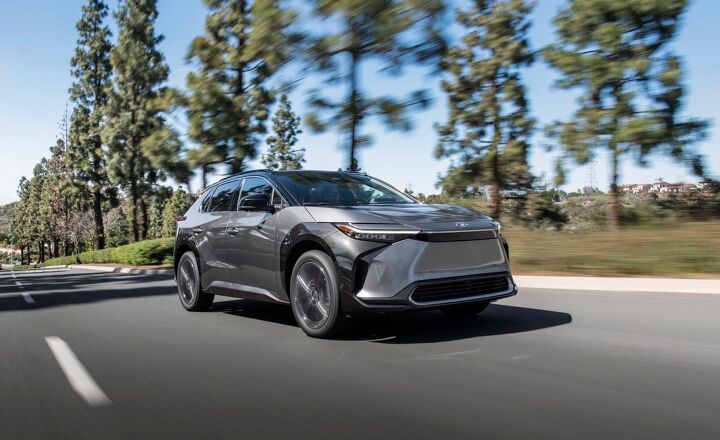






















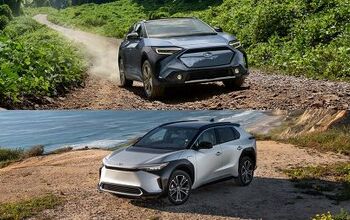
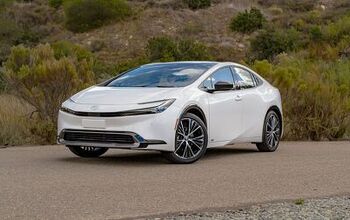
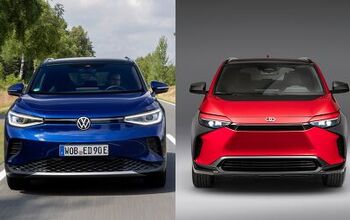
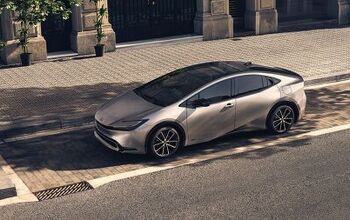

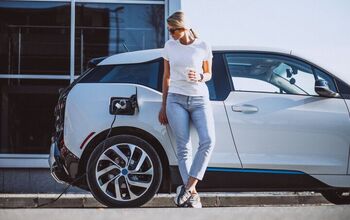


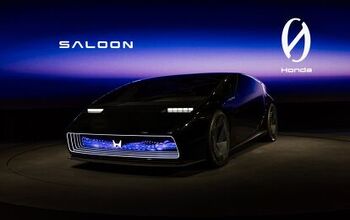
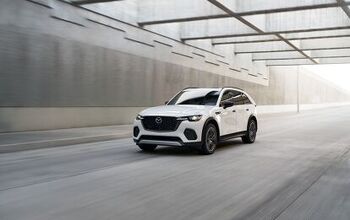
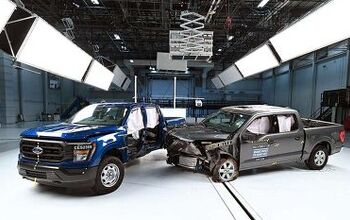

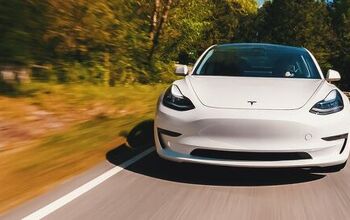
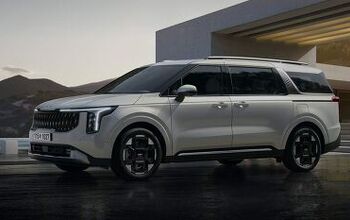
Comments
Join the conversation
Please let me know when it's available